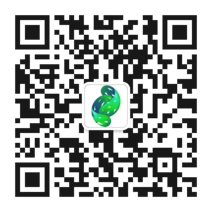Prev Post
Zhejiang Lab Holds a Tree-Planting Event


Doctor WANG Di
Sensors, as devices modeled on human sensations, have been used for various purposes. We rely on them for tasks such as measuring distance and humidity, monitoring noise, and preventing disasters. Gas sensors, a member of the diversified 'sensor family' are commonly used in industrial facilities, residential buildings, and entertainment venues, where they play a significant role in safety measures. The vast majority of existing gas detectors are mainly used for monitoring toxic and hazardous gases. Researchers therefore see great possibilities in expanding application scenarios and upgrading intelligent technical solutions of gas sensors.
Doctor WANG Di, a research specialist at the Zhejiang Lab Research Center for Intelligent Sensing, has been leading his team to work on the research and development of technologies related to olfactory and gustatory sensors. Milestone outcomes so far include a hand-held sensor for breath acetone (BrAce) detection and a V1.0 prototype of micro olfactory sensors.
Among the five human senses, olfaction has the most complex mechanism, one that has not been fully identified yet. Currently, gas sensors modelled on the olfactory mechanism are mainly used to detect toxic and explosive gases such as carbon dioxide, carbon monoxide, methane, and hydrogen. The gas sensors most commonly seen in residential and commercial buildings and public entertainment venues include carbon dioxide sensors, coal gas sensors, and formaldehyde sensors.
Gas sensors are designed to receive chemical signals. Due to sophisticated technical problems, they have not been widely used as physical sensors that react to acoustic, optical, electronic, and mechanic signals. “As gas samples in real life include a large number of gas molecules of various types, gas sensors are vulnerable to interference, making them moderately unreliable. Moreover, since the sensitive materials of gas sensors need to be exposed to external environments, they can be affected by chemical substances at any time, therefore making the sensors unstable,” Doctor WANG explained.
Fortunately, with the help of communication and artificial intelligence technologies, researchers have been upgrading and developing gas sensors to facilitate massive IoT application scenarios. In addition to toxic gas detection, gas sensors have been gradually utilized in areas such as health care, wearable devices, and food safety. For example, in the area of health care, carbon dioxide concentration profiles are the basis for determining a patient's pulmonary ventilation, and the concentration profiles of certain gas markers can monitor trends of several chronic diseases. Therefore, apart from relying on sensors to measure gas concentrations, doctors usually need to evaluate the profiles and make judgements accordingly. With AI technology, intelligent gas sensors are not only able to detect gases and generate profiles, but also capable of determining disease stage. Medical staff are therefore less stressful, and disease monitoring and health management have become possible.
There have been many health-related application cases of gas sensors. The hand-held BrAce detector developed by Doctor WANG’s team is a typical example. By using a gas sensor to measure breath acetone, it enables the rapid and painless detection of type 1 diabetes. Compared with traditional blood tests, breath tests provide a more comfortable treatment experience.
“With a low insulin level, a human body will be unable to convert glucose into energy. Instead, glucose is transformed into fat. As a byproduct of the process, acetone is exhaled,” said Doctor WANG, “Our hand-held BrAce detector uses a colorimetric sensor to detect color changes in gas-sensitive materials for breath acetone measurement.”
The device is user-friendly, only requiring the user to blow into the device. When breath passes through the detection unit, the acetone-sensitive material reacts with any acetone present and changes its color. The sensor interprets the change via optical signals and transforms it into electronic signals showing the concentration of acetone.

Schematic of a homemade device for BrAce detection
“In order to make the sensor stable, we employ a specific chemical reaction for acetone only. We also eliminate the interference of humidity, so the device can accurately detect acetone among the complex components of human breath. To make it more reliable, we are developing a daily disposable SMD acetone sensor. It can automatically measure acetone volatilizing from the skin and, with a low cost, can be easily used in real life”, said Doctor WANG, “In the future, combined with AI technology, the SMD acetone sensor can facilitate the diagnosis, monitoring, and treatment of diabetes.”

Experiments show the sensor accurately measures the concentration of acetone among the complex components of human breath.

A paper concerning this achievement was published in November 2020 in ACS Sensors.
With the development of technologies such as AI and IoT, gas sensors will play a significant role in the intelligent era. Considering the infinite possibilities of gas sensors, Doctor WANG's team did not stop at single-gas sensors. Instead, they aim to develop a highly integrated array of olfactory devices compatible with intelligent systems. They have already achieved some milestone outcomes. They expect to “use a small cellphone plug-in device to identify dozens of gases simultaneously,” so as to make it much more convenient to acquire food safety information and environmental monitoring data, and make wearable devices more intelligent. With more comprehensive and accurate health data and environmental information, we will become more sensitive to external environments and live a more intelligent life.

The picture shows the V1.0 prototype of a micro olfactory sensor. The project team is upgrading it into a smaller plug-in device.
Doctor WANG's team is composed of researchers in chemistry, materials, and biomedical engineering. By fully leveraging its interdisciplinary strength, the team carries out research in artificial olfaction and gustation as well as micro and intelligent chemical detectors. It aims to extend the application of olfactory and gustatory sensors in fields such as health care, food safety, and security. The team will carry out in-depth exploration in areas such as micro optical detection systems and integrated perception of multimodal signals.














